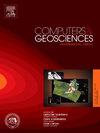基于神经网络的时空重力数据信号分离框架
IF 4.4
2区 地球科学
Q1 COMPUTER SCIENCE, INTERDISCIPLINARY APPLICATIONS
引用次数: 0
摘要
由重力恢复和气候实验(GRACE)和GRACE- follow on (GRACE- fo)卫星任务提供的全球时间重力数据包含了地球上许多质量再分配过程的信号。这些过程包括水文、大气、海洋、冰冻圈和与固体地球有关的过程。由于测量到的重力变化代表了所有信号的总和,为了科学应用的最佳利用这些数据,需要分离单个包含信号的策略。我们提供了一种使用多通道U-Net架构的神经网络算法,该算法将几个信号的总和转换为基于其典型时空模式的单个包含分量。该软件包含根据纬度、经度和时间将时空重力数据转换为二维“图像”训练样本的策略。该软件还包括用于引入关于单个信号的物理行为的附加知识作为训练约束的策略的实现。在闭环模拟实例中,大气和海洋、水圈、冰冻圈和固体地球过程诱导的模拟重力信号成功分离,相对RMS预测误差在19% ~ 67%之间。这表明,如果将考虑的数据转换为合适的数据格式,基于神经网络的方法可以帮助解决大地测量任务。为了将该框架应用于实际观测数据,我们建议在具有代表性的物理正演模拟信号上训练网络,然后将训练好的网络应用于实际数据。后者将额外需要外部验证策略。该软件在GitHub (https://github.com/Betty-Heller/neural-gravity)上免费提供,通常也适用于任何其他数据集的信号分离,具体取决于三个变量。本文章由计算机程序翻译,如有差异,请以英文原文为准。
Neural network-based framework for signal separation in spatio-temporal gravity data
Global, temporal gravity data such as those provided by the Gravity Recovery and Climate Experiment (GRACE) and GRACE-Follow on (GRACE-FO) satellite missions contain signals from many mass redistribution processes on Earth. These include hydrological, atmospheric, oceanic, cryospheric and solid Earth-related processes. As the measured gravity changes represent the sum of all signals, an optimal exploitation of these data for scientific applications requires strategies for separating the individual contained signals. We provide a neural network algorithm using a multi-channel U-Net architecture that translates the sum of several signals to the individual contained components based on their typical space–time patterns. The software contains strategies for transforming spatio-temporal gravity data depending on latitude, longitude, and time to 2-D “image” training samples. The software also includes implementations of strategies for introducing additional knowledge about the physical behavior of the individual signals as constraints to the training. In a closed-loop simulation example, simulated gravity signals induced by processes in the atmosphere and oceans, hydrosphere, cryosphere and solid Earth are successfully separated at relative RMS prediction errors between 19 and 67%. This shows that neural network-based methods can help solving geodetic tasks if the considered data is transformed into a suitable data format. To apply the framework to real observational data, we suggest training the network on representative, physical forward-modeled signals and subsequently applying the trained network to real data. The latter will additionally require external validation strategies. The software is freely available on GitHub under https://github.com/Betty-Heller/neural-gravity and is, in general, also applicable for signal separation in any other dataset depending on three variables.
求助全文
通过发布文献求助,成功后即可免费获取论文全文。
去求助
来源期刊

Computers & Geosciences
地学-地球科学综合
CiteScore
9.30
自引率
6.80%
发文量
164
审稿时长
3.4 months
期刊介绍:
Computers & Geosciences publishes high impact, original research at the interface between Computer Sciences and Geosciences. Publications should apply modern computer science paradigms, whether computational or informatics-based, to address problems in the geosciences.
 求助内容:
求助内容: 应助结果提醒方式:
应助结果提醒方式:


